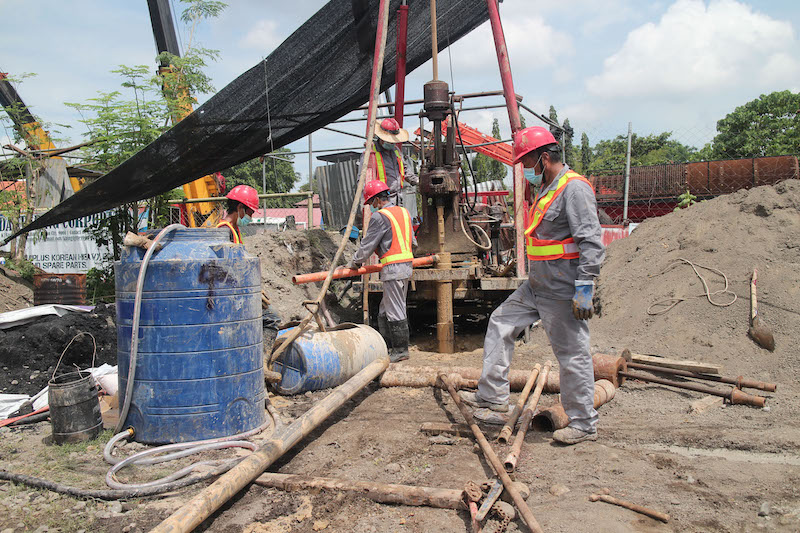Alignment of Davao-Samal Bridge ‘shortest and most cost-effective’

DAVAO CITY (MindaNews / 6 October) – The current alignment of the multi-billion Samal Island-Davao City Connector (SIDC) is the “shortest and most cost-effective,” Department of Public Works and Highways (DPWH)-Davao information officer Dean Ortiz said.
During the AFP-PNP press conference at the Royal Mandaya Hotel in Davao on Wednesday, Ortiz said it took the government two years to complete the feasibility study, contrary to the claims of the Rodriguez family, a resort owner, that it was hastily undertaken by government’s Hong-Kong-based consultant, Ove Arup.
The landing point of the SIDC project, also known as the Davao City-Samal Bridge, is situated on the coast of Costa Marina Beach Resort, which is adjacent to Paradise Island Park & Beach Resort in Barangay Caliclic, Babak District of the Island Garden City of Samal.
The 300-meter Paradise Reef lies on the coast of the two adjacent resorts operated by the Rodriguez and Lucas families.
Ortiz said the negotiations between the government and the Rodriguez family are ongoing but added the agency would resort to expropriation if both parties fail to arrive at a final deal.
He maintained that it is the “safest and most feasible alignment” compared with the other alignments previously explored.
“It’s the shortest route. Usually what happens with government projects, especially infrastructure, is that we take the shortest and most economical route,” he added.
He assured the construction work would not destroy the Paradise Reef because the government contractor would do “controlled excavation,” put up floating geotubes to contain the spread of silts and other debris, and deploy a barge to immediately recover the debris from the site.
The state-owned China Road and Bridge Corporation has been selected as the contractor for the project.
“What we will do is what we call… controlled excavation. To simply illustrate, if this is the bored pile, the excavation will just be limited around it. We will excavate around the area where we put the post,” he said.
The Rodriguez family expressed concern that the project will cause “irreversible and irreparable destruction” on the healthy coral garden and marine life if it pushes through.
“The resort owners Rodriguez-Lucas Family supports the SIDC Project. But they have called for its realignment and in fact have offered to donate to DPWH its Lumos beach property as an alternative landing site in Samal Island to save the Paradise Reef, which the family has preserved for almost a century,” the Rodriguez family said in a statement released on Wednesday.
The family questioned the lack of prior consultation, alleging that the present alignment was chosen in a workshop in Manila without the participation of local landowners and stakeholders.
They said the Environmental Compliance Certificate for the SIDC Project was issued without a prior Protected Area Management Board clearance.
Contrary to DPWH’s claim that the Samal landing site is outside a protected area, the entire Samal Island remains a protected area, according to the family.
They said it was established as a Mangrove Swamp Forest Reserve under Proclamation No. 2152, S. 1981, an initial component of the National Integrated Protected Areas System.
“The law requires an act of Congress to disestablish a protected area or modify its boundary. The DPWH has not come forward with any such evidence insofar as Samal Island is concerned,” they said.
Ortiz admitted that the operation might have some “inevitable” impact on the coral reefs but assured them that the government would manage it to minimize damage.
“The DPWH and other agencies commit to restore the reef. Although not in its original state, there are other certain measures that we can adopt to somehow lessen the impact on marine life or, in that case, sustain marine life in that area, through putting up artificial reefs or other technology we can introduce for that,” he said. (Antonio L. Colina IV/MindaNews)



No comments:
Post a Comment